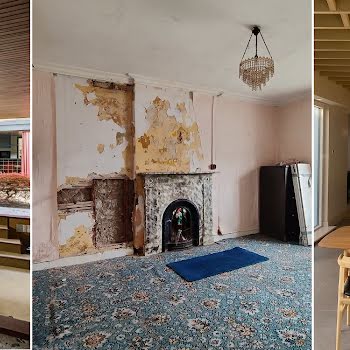What would the end of Direct Provision look like? New report lays out a roadmap
By Lauren Heskin
21st Oct 2020
21st Oct 2020
A new report commissioned by Government suggests ending Direct Provision by 2023 and replacing it with a shorter-term system and improved housing.
Ireland’s Direct Provision system has come under sustained criticism in recent years, from human rights activists, legal experts and the general public. However, it really came to the fore of public consciousness earlier this summer with the Black Lives Matter protests that broke out around the world in response to police brutality and institutional racism.
Centres run by for-profit businesses, very limited individual freedoms and extensive wait times have all come under scrutiny as of late. In response, the Day Report, led by former secretary-general of the European Commission Dr Catherine Day, was commissioned by in June by then Minister for Justice Charlie Flanagan.
He said at the time, “How Ireland treats its minorities including those seeking asylum has been at the forefront of many of our minds recently… Minister Stanton and I welcome that focus as we believe that root and branch reform of the system and the policy behind it is required.”
Now, according to the Irish Times, the report results and a list of recommendations have been sent to Government and looks at everything from disassembling the current model of direct provision to a new, state-run replacement.
Quick History
Direct Provision was set up in 1999 as a temporary measure to house asylum seekers who were applying for refugee status. However, it’s come under significant criticism since then, including accusations of human right violations by the UN, years waiting for application decisions and deportations and the for-profit businesses that run the bulk of Ireland’s 33 Direct Provision Centres.
You can learn more about Direct Provision here.
The Report
The expert group, who consulted with NGOs including the Irish Refugee Council and Movement of Asylum Seekers in Ireland (MASI), proposes ending Direct Provision by 2023 and introducing a three-part state-run program instead that would not only see asylum seekers housed in state accommodation for three months or less, but also cost significantly less than the current program.
It suggests that asylum seekers be initially placed at state-run accommodation to get their refugee application underway and receive legal advice and a vulnerability assessment. Then, they would be moved to own-door accommodation run by local authorities in a scheme similar to the housing assistance payment (HAP).
Longer-term housing should be in urban and suburban areas were asylum seekers can easily access employment and education. Asylum seekers are currently unable to open a bank account or apply for a driver’s license, which makes job applications difficult, though some of this is due to be addressed in the report.
Application process
The application processing time is expected to be reduced also with initial decisions due within six months, as required under the European Communities recast Reception Conditions Directive, and a further six months for appeal. If the State refuses the applicant refugee status, they would be able to remain for a further six months in housing.
However, none of the report is legally binding though it does suggest making it so and including targets and legislative targets. Once the report is published today it will go to Department of Children, Disabilities, Equality and Integration for review.
Featured image: Kristina Tripkovic on Unsplash
Read more: This is what you need to know about direct provision
Read more: ‘We live here. We work here. We belong here’: Groundbreaking research unveiled for undocumented in Ireland
Read more: Racism in Ireland is on the rise, but are we still listening?






















